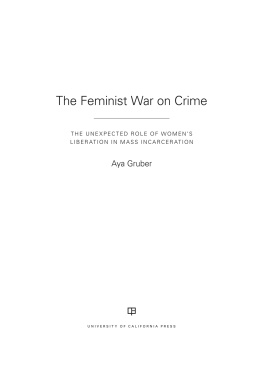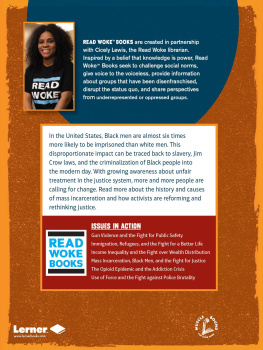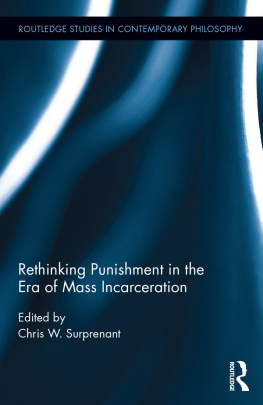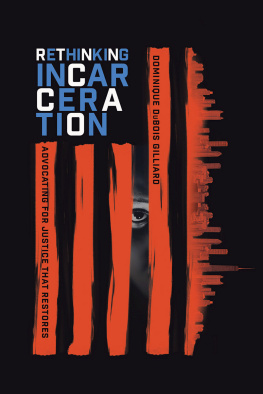Contents
Landmarks
Print Page List
Copyright 2019 by Emily Bazelon
All rights reserved.
Published in the United States by Random House, an imprint and division of Penguin Random House LLC, New York.
R ANDOM H OUSE and the H OUSE colophon are registered trademarks of Penguin Random House LLC.
Grateful acknowledgment is made to Graywolf Press for permission to reprint an excerpt from Rally from Crave Radiance: New and Selected Poems 19902010 by Elizabeth Alexander, copyright 2010 by Elizabeth Alexander. Reprinted with the permission of The Permissions Company, Inc., on behalf of Graywolf Press, Minneapolis, Minnesota, www.graywolfpress.org.
LIBRARY OF CONGRESS CATALOGING-IN-PUBLICATION DATA
Names: Bazelon, Emily, author.
Title: Charged: the new movement to transform American prosecution and end mass incarceration / Emily Bazelon.
Description: New York: Random House, 2019. | Includes index.
Identifiers: LCCN 2018045826 | ISBN 9780399590016 (hardback) | ISBN 9780399590023 (ebook)
Subjects: LCSH: ProsecutionUnited StatesDecision making. | Prosecutorial misconductUnited States. | Public prosecutorsUnited States. | Sentences (Criminal procedure)United States. | ImprisonmentUnited States. | Criminal justice, Administration ofCorrupt practicesUnited States. | BISAC: LAW / Criminal Law / Sentencing. | POLITICAL SCIENCE / Public Policy / General.
Classification: LCC KF9640 .B39 2019 | DDC 345.73/05042dc23
LC record available at https://lccn.loc.gov/2018045826
Ebook ISBN9780399590023
Book design by Jo Anne Metsch, adapted for ebook
Cover design: Oliver Munday
Cover image: Emily Berl/Redux Pictures
v5.4
ep
Contents
Then the crowd made noise that gathered and grew until it was loud and was loud as the sea.
What it meant or would mean was not yet fixed nor could be, though human beings ever tilt toward we.
ELIZABETH ALEXANDER
The gun was an offering.
Kevin heard about it around midnight on a May evening. Hed gone to the corner store to buy a single cigarette and was heading back to his high-rise in a housing project in Brownsville, a neighborhood in the middle of Brooklyn. The people hed grown up with were often out at night, and he saw a knot of them, young men around his age, twenty, hanging out by a pair of green benches in a grassy spot near his building. As they swapped greetings, Kevins friend Mason flicked his eyes at a plastic shopping bag on the ground, lying there like a piece of trash.
We got the jawn, he said.
Jawn could stand for a lot of thingsa pair of shoes, a personbut Kevin knew exactly what Mason meant: there was a gun in that bag.
I know things are crazy for yall here, Mason said, so I got this for you.
The police were a frequent presence around the projects, so no one picked up the bag or asked to see the gun. Kevin said his goodbyes and started walking away in the alert and fluid way he had, shoulders back and arms swinging, tall and lean and young, his hair pulled back in a ponytail and his gray hoodie sweatshirt zipped, always aware of where he was but trying not to look over his shoulder. It was important not to look skittish, not around his friends and not if the police were watching, but Kevin also didnt want to hang around with a weapon lying at his feet. He didnt want the trouble a gun brought.
Kevins housing project, a cluster of brick buildings, was one of eighteen in Brownsville, making the neighborhood one of the densest concentrations of public housing in the country, with more than sixty thousand people packed into 1.2 square miles. The project could feel like a small town, in an old-fashioned way. It had its own recreation center and known personalities and raffish identity. Kevin got a laugh out of the nicknames for the loudmouths or tough guys: Koolaid and Lil Head and OgLoc. Hed lived there his whole life, with his older sister and her two-year-old daughter, his younger brother, and his mother, whod raised her kids mostly on her own, working retail jobs and caring for the elderly and disabled. The average rent in the Brownsville projects was $430 a month. Families tended to stay for years once they got off the waiting list for an apartment. We stick together, Kevin said. We went to school together. Your apartment might be on top of mine. Your mom might have babysat me.
On a good day, the projects residents would come outside to play music and catch up. You knew it was spring when older people brought small towels to sit on and raised their faces to the sun. That kind of day, Im going to be where everyone is, the girls, the mamas, the babies, Kevin said, thinking on it. That kind of day, its perfect.
But Brownsville was also one of New Yorks most disadvantaged communities, measured by health as well as economic insecurity, and one of its most dangerous. The year Kevin was twelve, more than a hundred people were shot in and around Brownsville and another thirty were killed, about half the number in all of Manhattan. Guns were a fact of life. I could find someone with a gun before I could find someone with a diploma, Kevin told me. Over the years, hed lost people he knew, including close friends. The beefing wasnt mainly between the gangs with well-known names, like the Bloods or the Crips. They existed, but their presence in the neighborhood was fading. More trouble came from menacing rivalries that pitted groups in the projects against their peers in other projects. The conflicts and alliances shifted, but there was one other project in particular that was the main foe of Kevin and his friends.
Kevins father lived in the rival development. Hed moved back in with Kevins grandmother when he and Kevins mother split up, back when their children were young. Kevins dad paid child support regularly, and they talked once in a while, but Kevin hadnt gone over to see him in years. One day, standing on the street outside his building, he gestured toward the windows of his grandmothers apartment, visible a couple of blocks away, above the trees. I cant remember what the inside of my nanas crib looks like, he said.
The battle lines between the projects were drawn when Kevins father was growing up, when established gangs fought over territory so they could sell drugs. Kevin didnt know whyand it didnt really matter how the trouble started back in the day. Fresh insults piled on top of old grudges. The reason for a fight or even a shooting could be minordisrespecting someone on social media, or flirting with his girlfriend. Kevin found it disturbing. Most people he knew did. But that wasnt the same as knowing how to end it. There was too much bad blood. Hed learned you could defend a place, and your people in it, yet at the same time wish you were anywhere else.
When Kevin was thirteen, he went to the store for his mother and got jumped. All he knew was that the people who beat him up and took his money were from another project, and that now he and his friends would have a problem with them. Months later, one of his eighth-grade classmates was killed in a shooting. Kevin didnt know why that happened, either.
At fifteen, he got jumped again and was slashed in the face with a razor blade. Conflict built until trauma begot trauma in Brownsville. In a focus group of young men of color coming home from Rikers Island, nine out of ten said theyd been robbed, jumped, or seriously hurt in a fight they didnt start, though none of them identified as victims of crime. Writing up the results, the Vera Institute of Justice pointed out that if they dont sufficiently recover, people who are victimized, especially when theyre young, are more likely to gravitate toward peers they think can protect them and to commit retaliatory violence themselves. After Kevin was jumped, he couldnt afford to look like an easy target. He and some of his friends found one of the boys who had assaulted him and beat him up.











